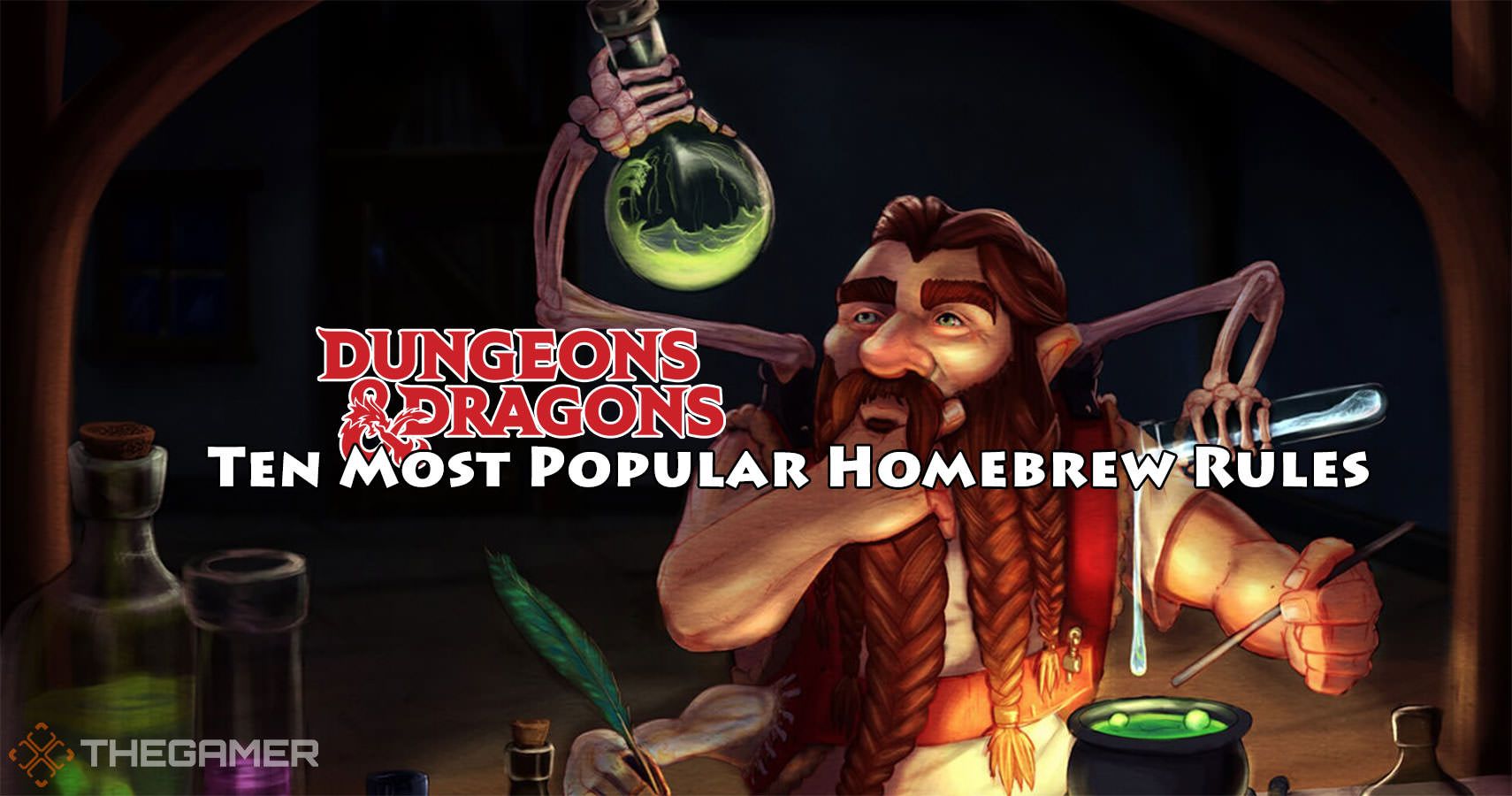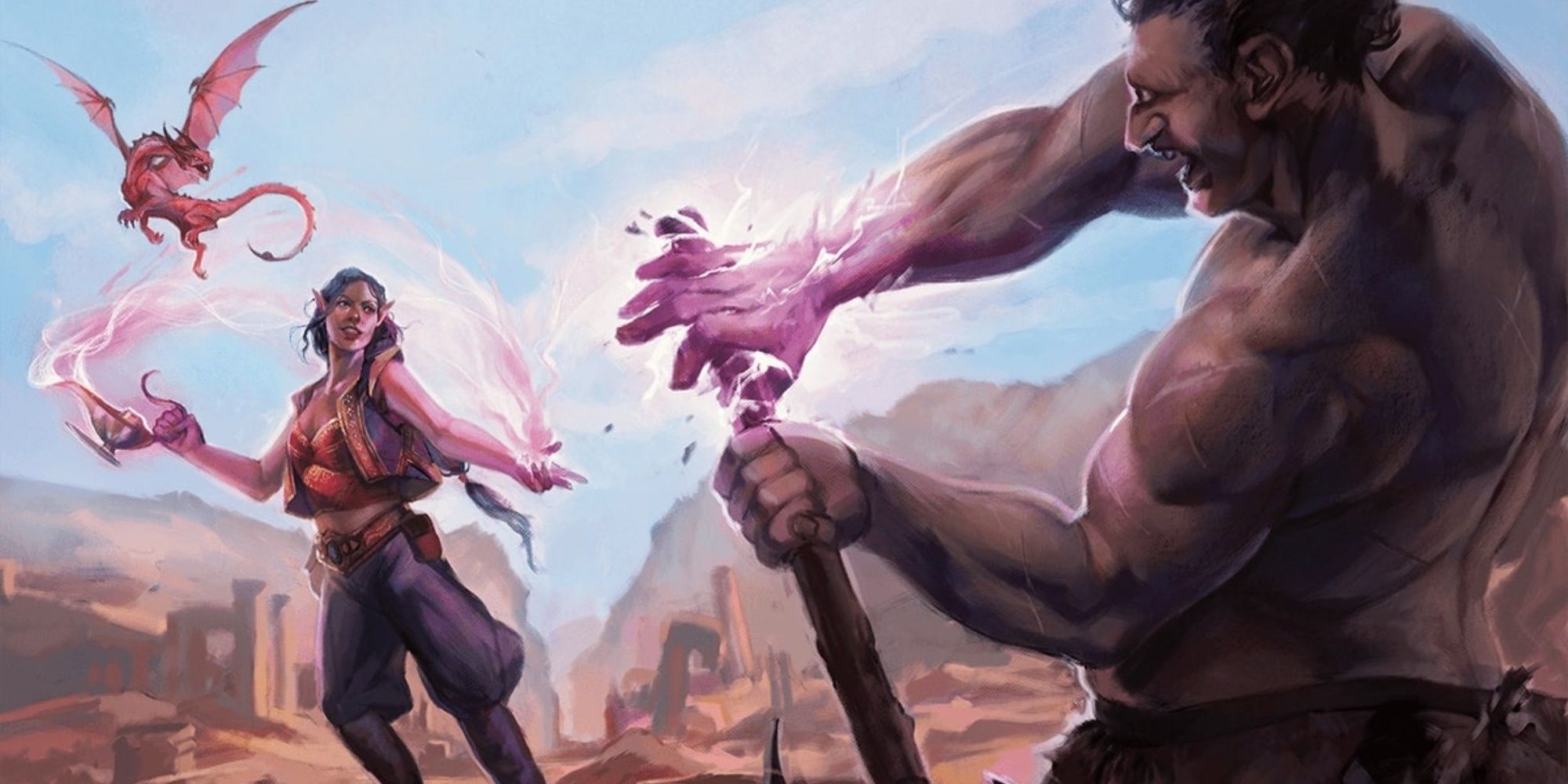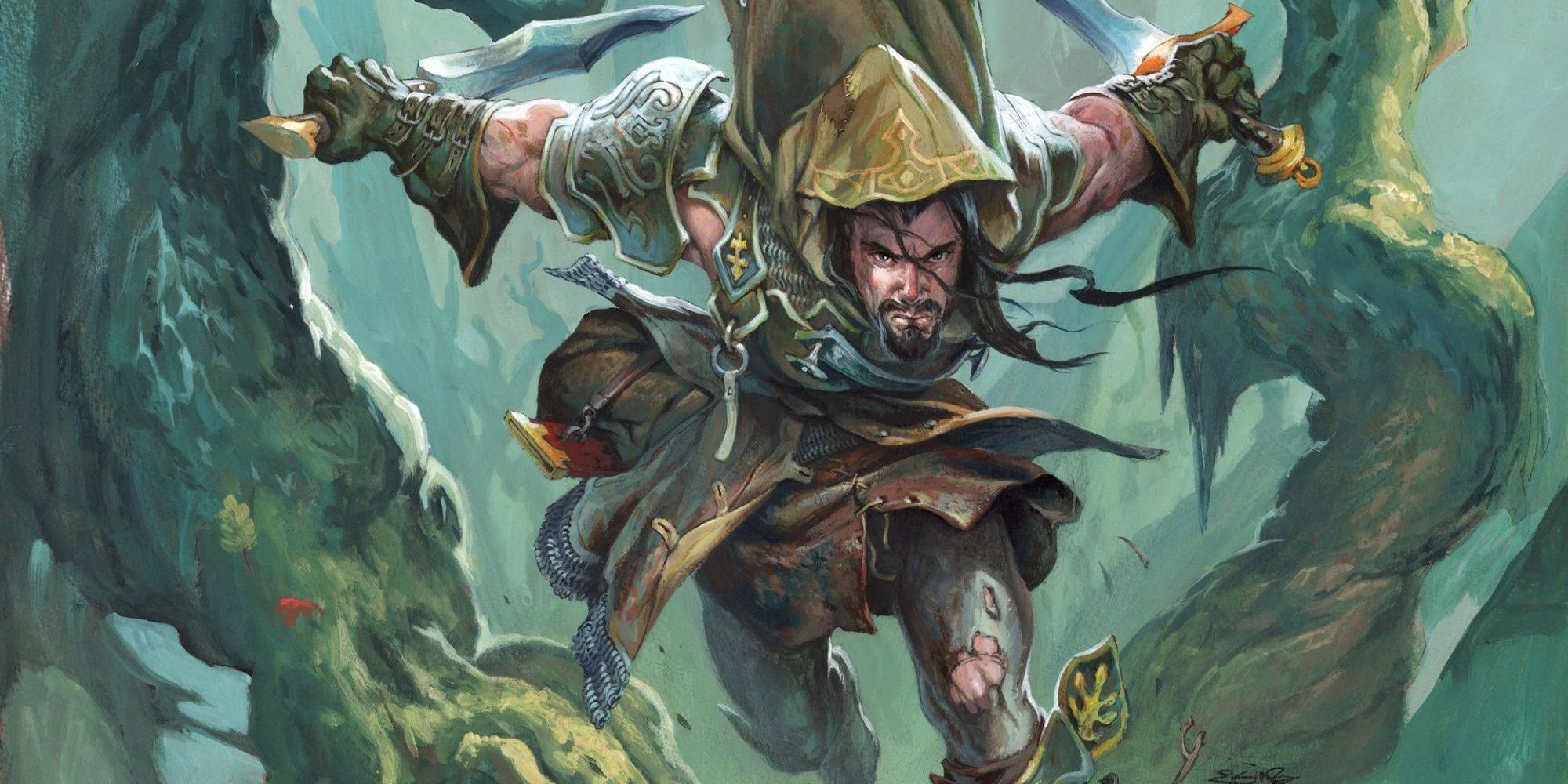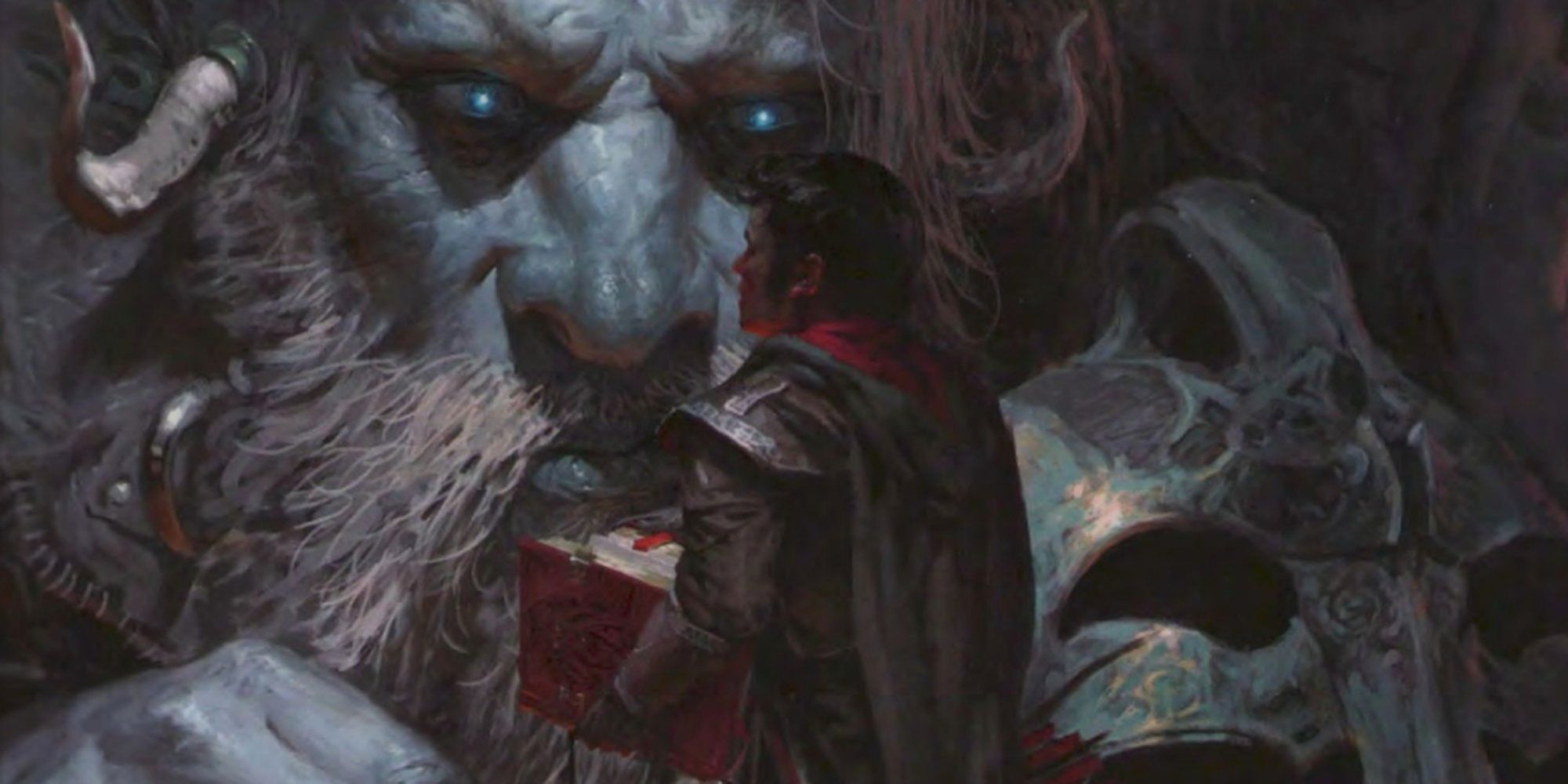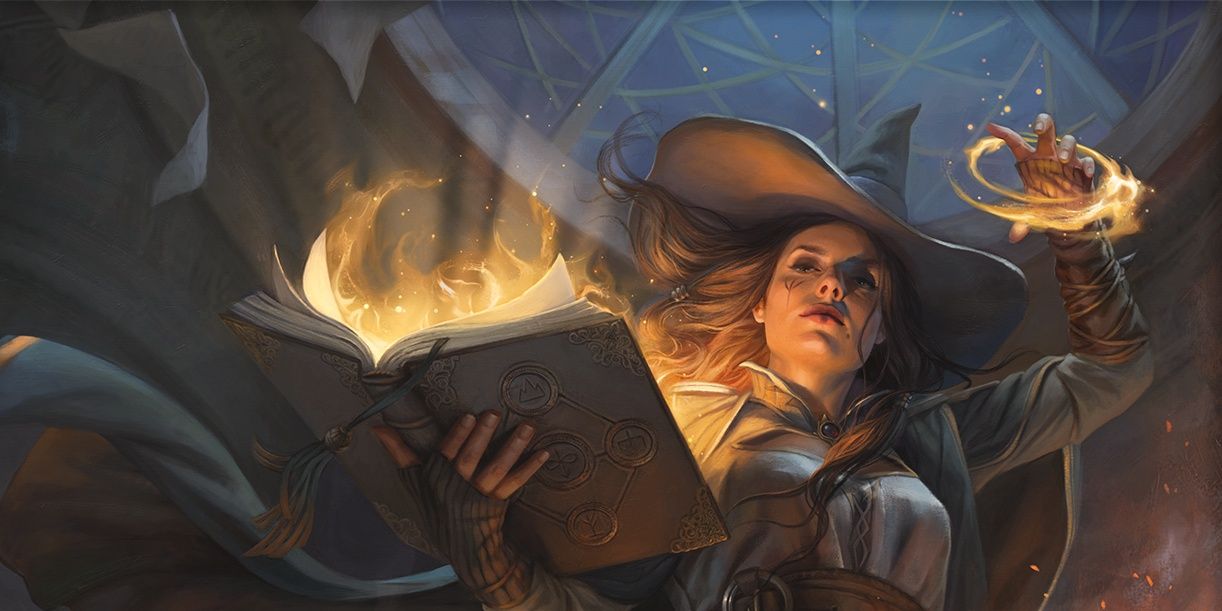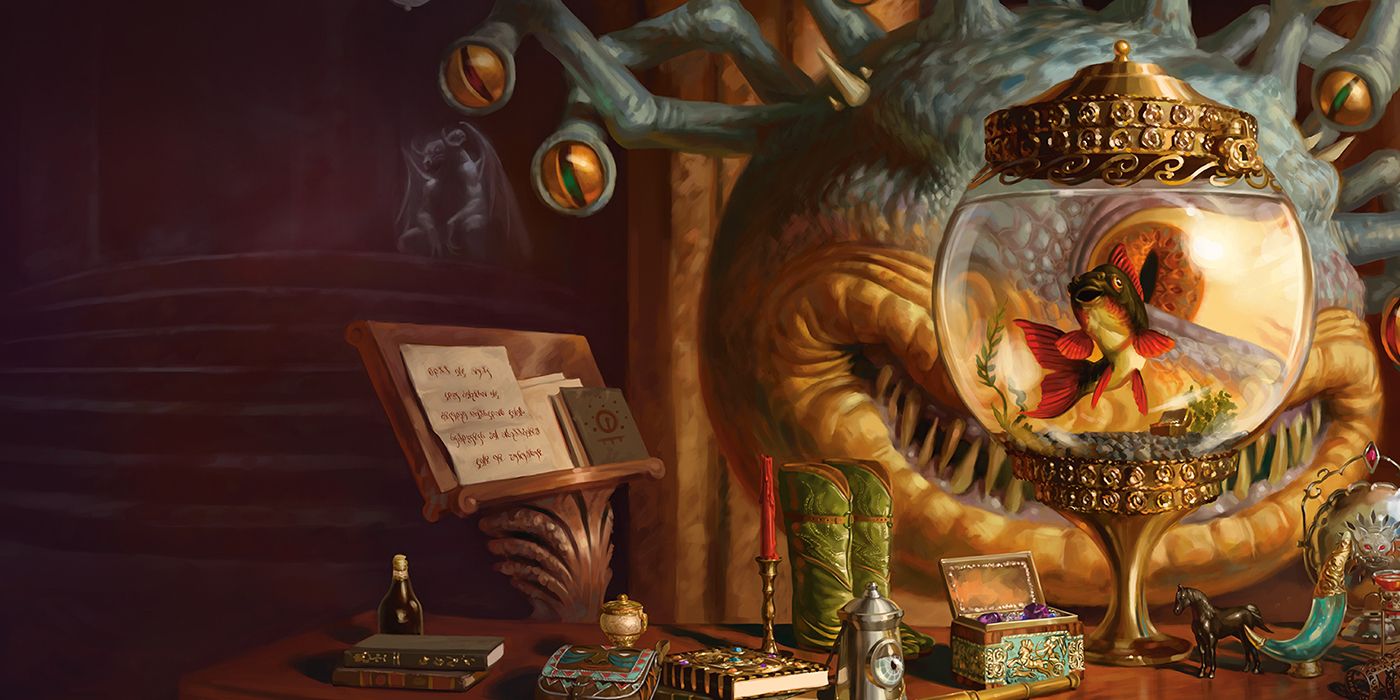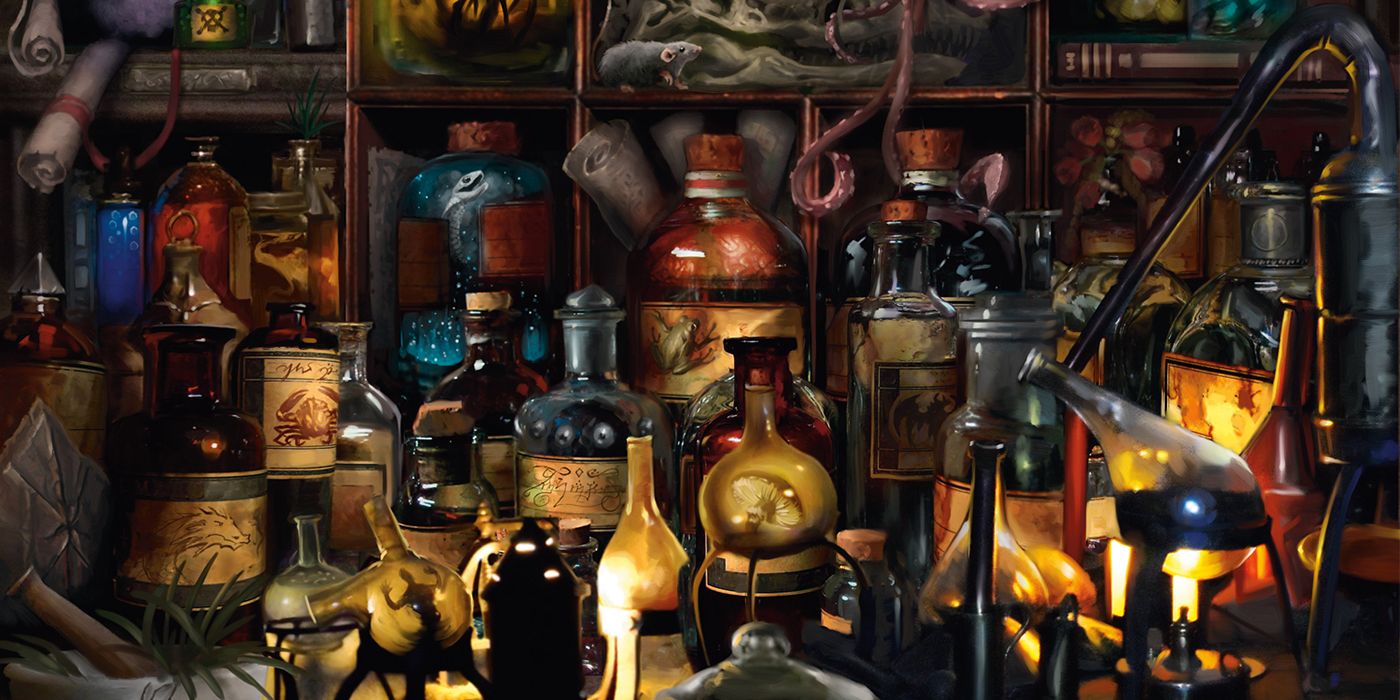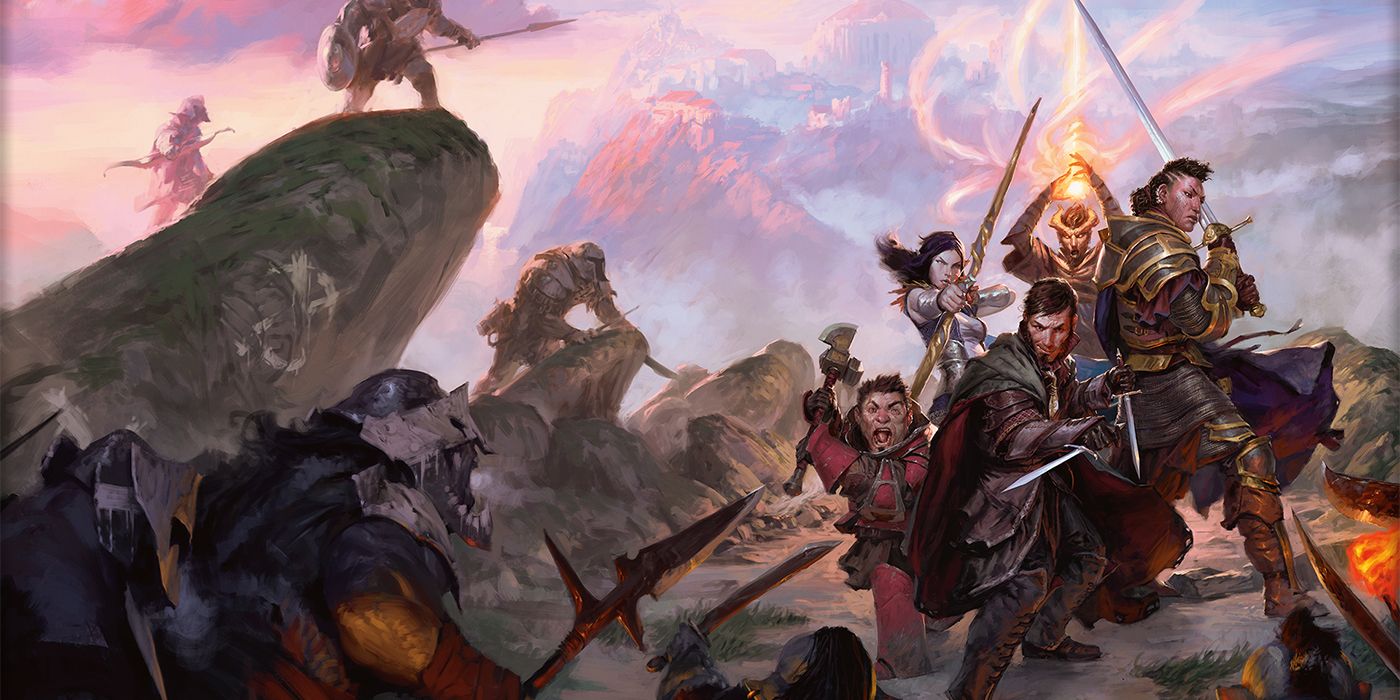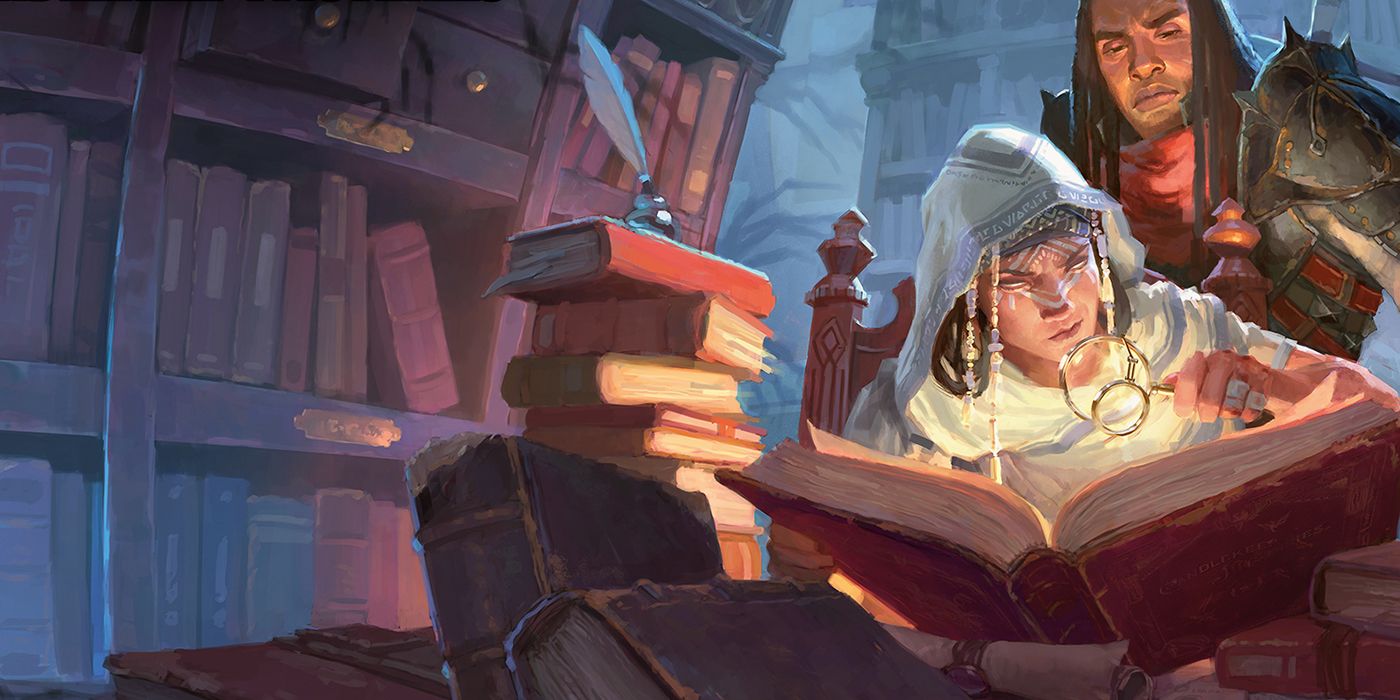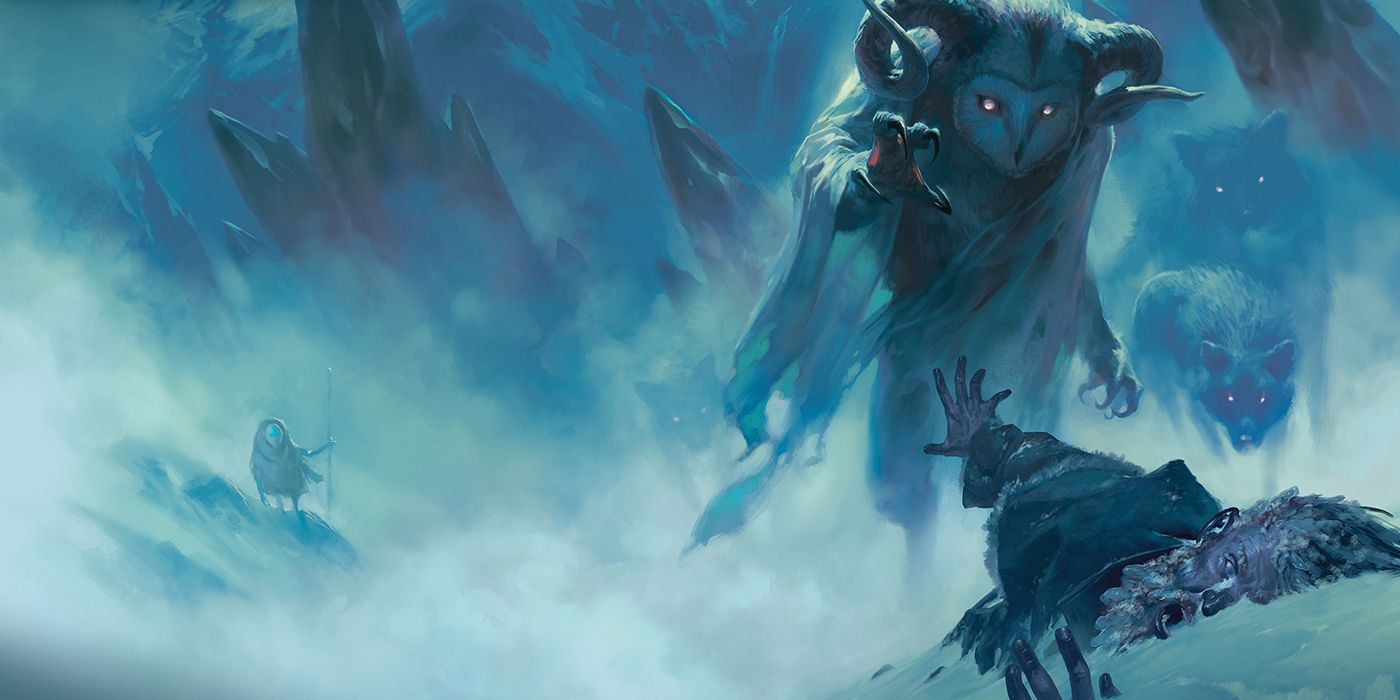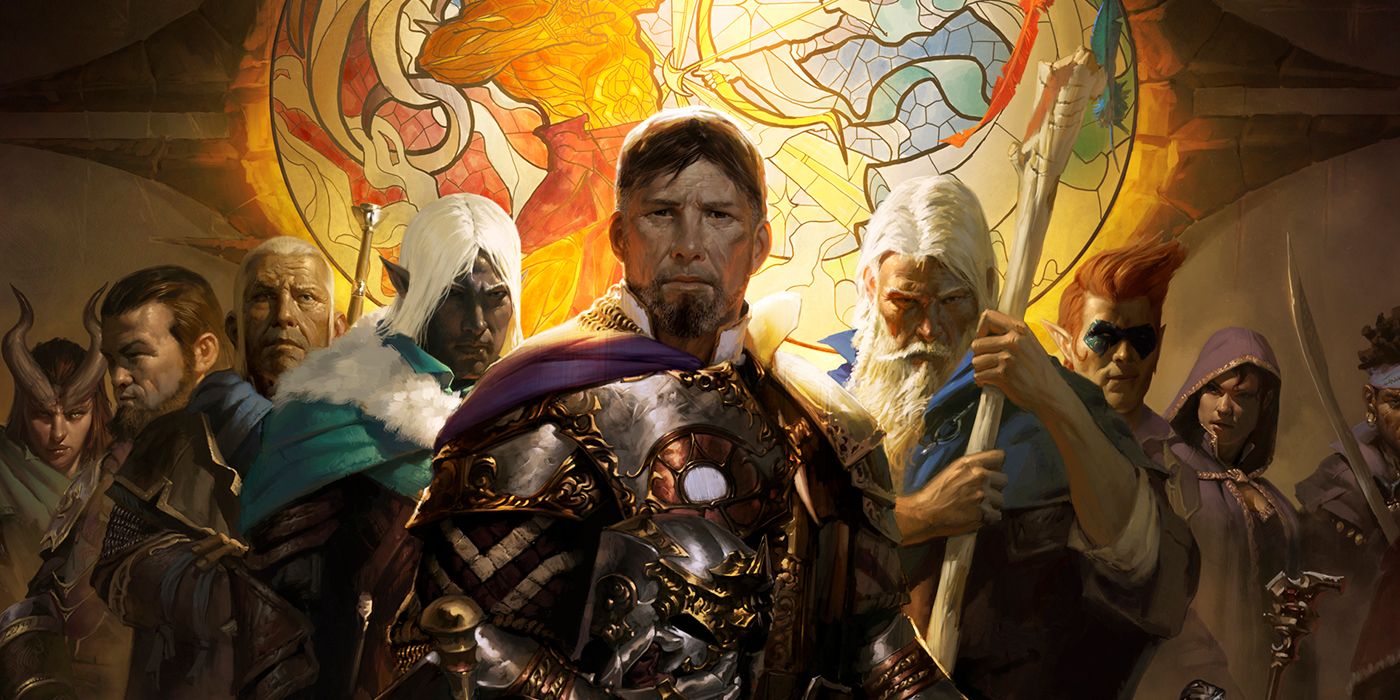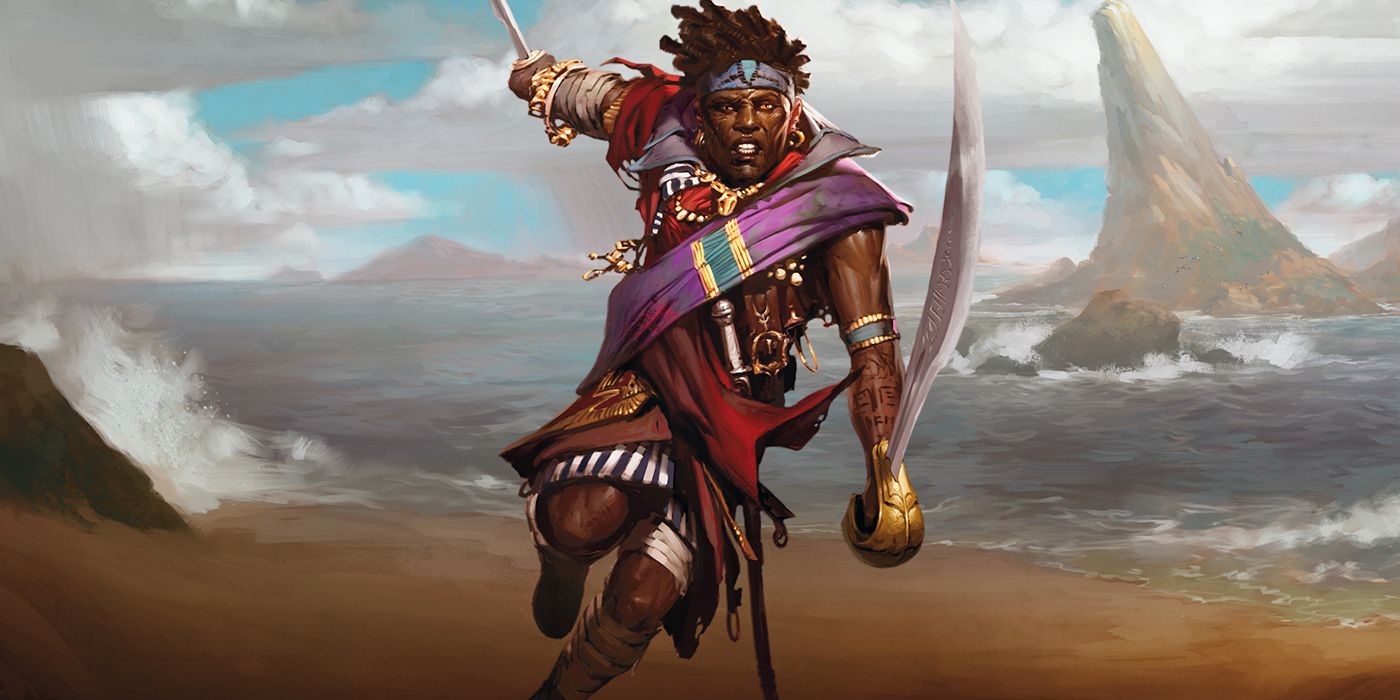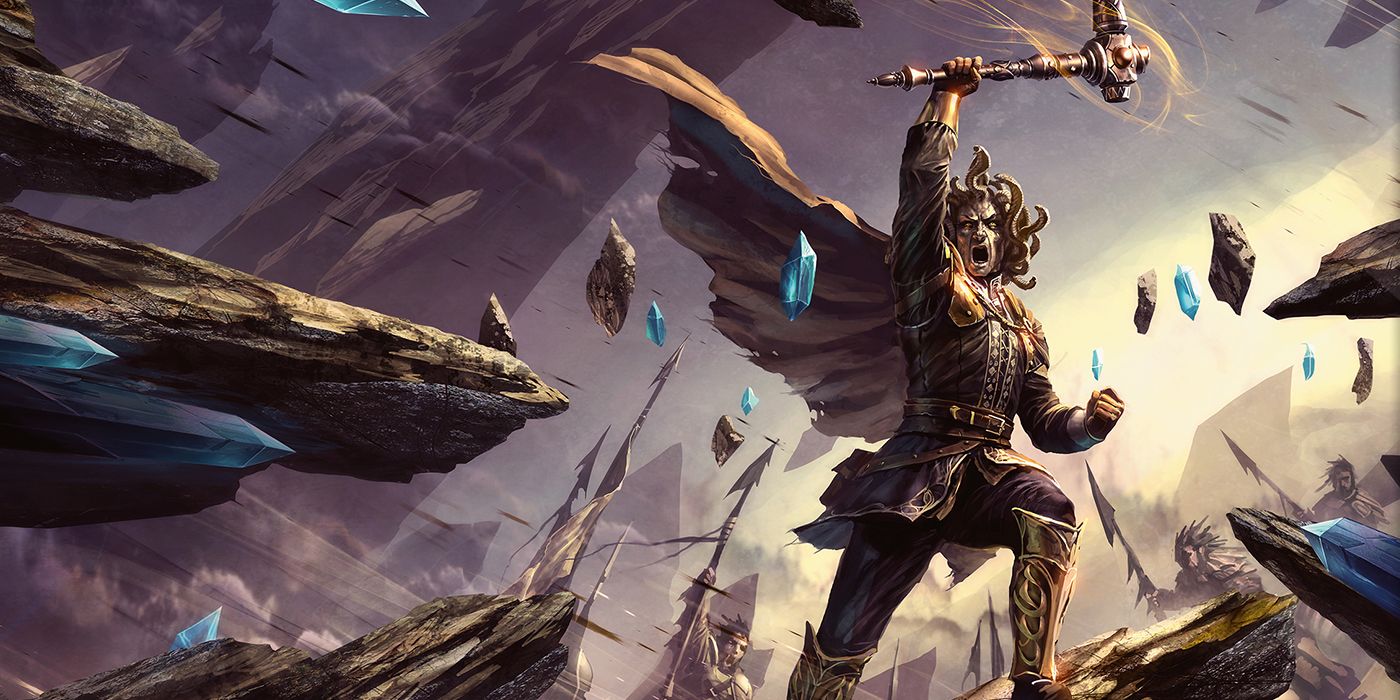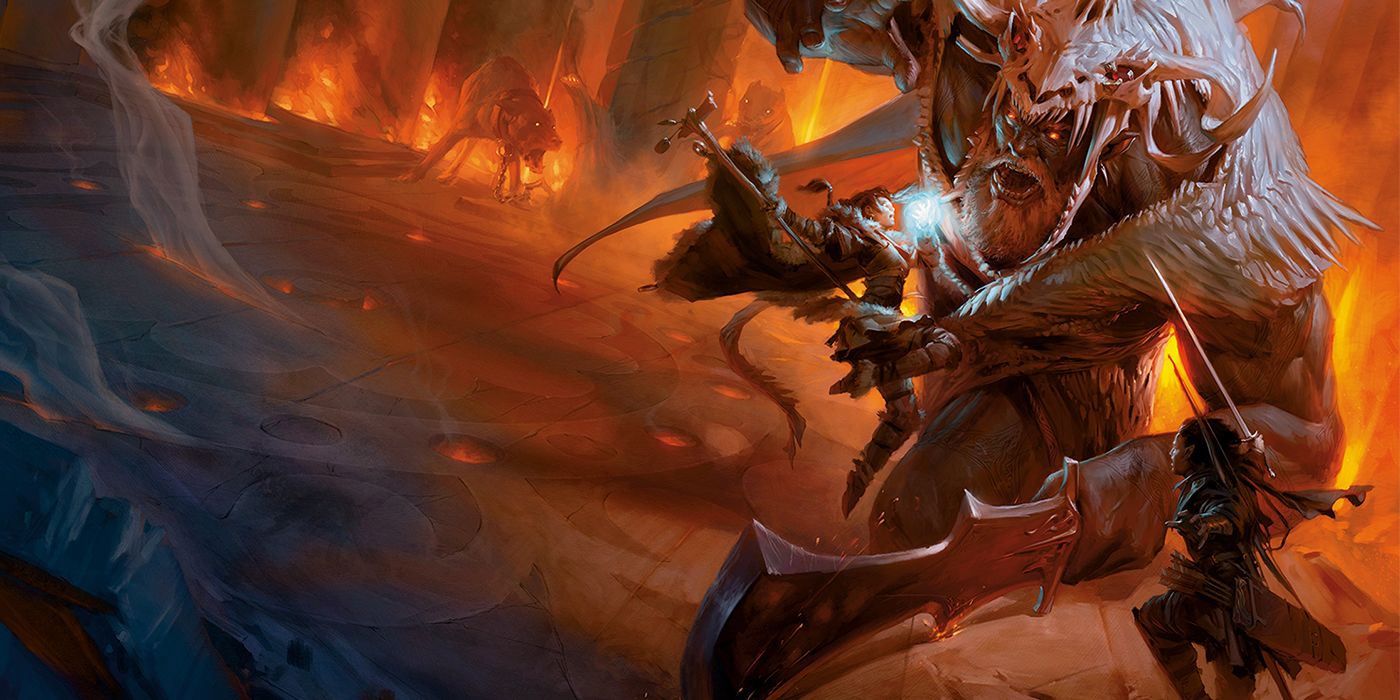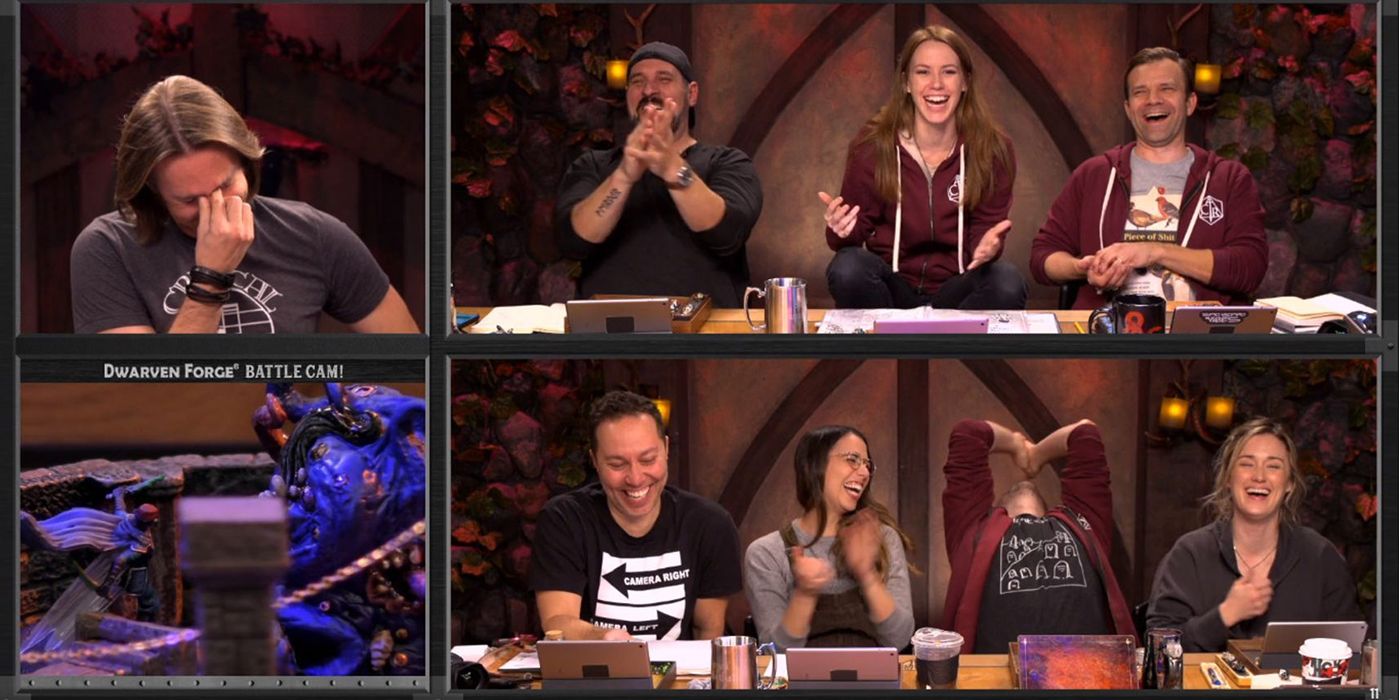There are many rules in Dungeons & Dragons 5e, and there are new sourcebooks and materials added to the game on a regular basis. But still, there are some rules and options that are missing from the game.
There are a lot of ways to improve a D&D game by accessories, devices, or extra sourcebooks and materials. But the easiest way to improve a game is using homebrew rules. Some of these rules have gained so much popularity that some players even mistake them as the default rules of the game. These rules can help the immersion of the game, answer some of the game's shortcomings and weaknesses, or improve roleplay at the table.
Updated October 1, 2021 by Paul DiSalvo: As D&D is a game run by a player in the form of the Dungeon Master, no two campaigns will ever be the same. While D&D has a lengthy set of rules, different types of homebrew allow games to offer more robust and flexible experiences, some presenting more or less difficulty than may be intended by the core rule book, and others that simply open up additional options to players. While a DM may decide to add their own homebrew mechanics to a game, there are many frequently used homebrew rules employed by a multitude of DMs.
15 Lingering Injuries
In D&D, unless a character is killed, on paper, any damage they sustain can be healed through the use of magic or though taking enough short or long rests. However, some DMs may want to add additional stakes and weight to the damage characters sustain through the inclusion of lingering injuries that can’t be healed so quickly.
Most commonly used when characters sustain massive amounts of damage in a single hit, lingering injuries can come in forms such as broken bones or in more severe cases, the loss of a body party like an eye or a hand. There are a variety of fan-made charts that can be used to dictate the form a lingering injury may take if a Dungeon Master opts to include them to ramp up the difficulty and realism of a campaign.
14 Starting WIth A Feat
Rather than making things more difficult like with Lingering Injuries, some DMs may rule that characters are allowed to take a feat for free at level one. Feats are flavorful optional abilities that a character can gain at certain level ups rather than improving their ability scores.
While feats are normally only optional abilities that a player may choose to acquire as they gain levels, for the sake of fun and fleshing out characters, you can allow players to start with feats from the word go.
13 Critical Skill Checks
Few elements are as synonymous with Dungeons & Dragons as the act of rolling a natural 20. While rolling a natural 20 causes a critical hit to be landed in combat, contrary to popular belief, rolling a natural 20 on a skill check does not necessarily result in a success, still factoring in a character’s modifiers and relevant DCs.
However, as many DMs believe it to be more fun and in the spirit of the game, it is common practice to allow the ruling of automatic success that comes with a natural 20 to extend to every roll in the game.
12 Expanded Reincarnation Table
Reincarnate is a unique resurrection spell that is exclusively available to Druids. While most resurrection magic requires a body to be intact, Reincarnate allows for a character to be brought back from the dead as long as a small piece of them remains. The trade-off is that the spell creates a new body to house that creature’s soul, with the new body being of a randomly selected race.
However, as the spell was included when D&D’s fifth edition had only just started, its chart only allows a character to be reincarnated as one of the races from the player’s handbook, excluding the majority of the game’s races. Luckily, there are several fan-made charts that are up to date with every race in the game that many DMs will homebrew in as the spell’s used chart of races.
11 Rule Of Cool
One of the most commonly used homebrew rules in D&D is the Rule of Cool. While D&D has its own list of rules that determine how the game is played, the Rule of Cool essentially allows DMs to let players occasionally bend these rules if their ideas are creative and/or fun enough. This allows players to use the effects of spells, items, and abilities in ways that were obviously not intended, but make feasible sense.
This is not to say using this rule disregards the principles of D&D, but rather it prioritizes fun and rewards players for being creative and using their heads, slightly bending the standard practices in the process.
10 Using Healing Potions As Bonus Action
This homebrew rule has been around for years, but it has gained more popularity in recent years thanks to Twitch shows such as Critical Role. Based on the rules stated in the Player Handbook, Consuming any potion requires an action. But this makes healing potions a bit useless in combat.
Healing potions are expensive and important items in any D&D campaign, but most players would rather use their action for casting more effective healing spells, attacking, running away, or even taking the dodge action than drinking a healing potion. By tweaking this rule, healing potions become more flexible and easy to use with just a bonus action.
9 Flanking Bonus Instead Of Advantage
Flanking is an optional rule in the 5th edition of D&D that most groups use. Mechanically and thematically, it makes sense to have a bonus against an enemy who is flanked by your allies. However, most players and especially DMs find the default bonus of having advantage on all attack rolls a bit overpowered.
The alternative that many D&D content creators and game designers suggest is having a +1 or +2 bonus added to the attack roll instead of having advantage. This is still enough of an incentive for players to try and flank their enemies but removes the unbalanced hit rate of having advantage on all attack rolls.
8 Help Action For Skills Require Proficiency
Help action is a mechanic in 5e rules that allows a character to, as an action, help an ally in a certain task so that they get advantage on their dice rolls. This rule works fine in combat, as helping an ally by distracting an enemy will increase their chance of hitting that enemy. But, for out of combat ability checks, this rule is not realistic.
If a strong and heavy Barbarian is trying to move a huge rock out of the way, a Wizard with a strength score of 8 shouldn't be able to help them in their Athletics check — or vice versa: a Barbarian shouldn't be able to help the Wizard decode a magical secret by helping them in their Arcana check. Having proficiency in a certain skill is a realistic requirement for helping another character with their skill checks.
7 Hidden Death Saving Throws
When a character drops to 0 hit points, they start to roll death saving throws to see if they stay alive or die before an ally helps heal or stabilize them. By having this roll hidden from other players, the DM can add a level of excitement and stress to deadly combats.
When other players don't know how many more turns their unconscious ally might survive, they have more realistic and challenging decisions to make when it comes to helping the ally or trying to finish off the enemy.
6 Ressurection Rituals
One of the common complaints around the 5th edition of the game is that, past a certain level, death becomes inconsequential as there are different resurrection spells available to most spellcasters. Matthew Mercer came up with a roleplay-heavy, emotional, and harder challenge for successfully resurrecting a dead ally for his players on the show Critical Role.
This ritual makes the resurrection have a chance of failing, and it leads up to memorable moments when the party works together as a group to bring back their ally, rather than the Cleric casting a spell that is guaranteed to succeed.
5 Ignoring Drawing And Switching Weapons
There are complete and somewhat complicated rules around drawing, sheathing, and switching weapons in the Player Handbook, but these are rules that most players ignore, and sometimes even forget.
Whether this is intentional or unintentional, not having to worry about these rules makes the combat a lot easier to track, and unless a group is planning on following all the rules as written in the books, not having to worry about this rule makes the game more enjoyable for most players.
4 Hit Dice While Leveling Up
Whenever a character levels up, they get to roll a hit dice to see how much their hit points increase, or, instead, they can choose the average number suggested in the Player's Handbook. Since D&D is a game based on dice, most players like to roll for their hit points, but that means sometimes they are disappointed with a low roll and they end up having a weaker character than the rest of the party.
Some DMs give the players the choice to roll one time, and if they roll below the average, they can choose the average number instead. This means that players always gain at least the average number of hit points, and avoids the devastating feeling of rolling a 1 on their hit dice.
3 Fumble On Natural 1
There is a rule in older versions of Dungeons & Dragons and Pathfinder that, when a player rolls a natural 1 on a d20, they face a negative consequence based on what they were trying to do. This critical failure rule doesn't exist in 5th edition, but most DMs often use it when their player rolls a 1.
There are Fumble tables from Pathfinder that some groups use to determine the outcome of a critical failure, but the more common practice is for the DM to come up with the effect on the fly, fitting it to the narrative of the moment.
2 Action-Oriented Monsters
A very common issue in D&D 5th edition, especially in higher levels, is that action economy often is more important than having a single strong enemy. This makes fights with iconic monsters such as dragons or beholders somewhat easy for high-level parties.
Matt Colvile introduced the idea of action-oriented monsters for D&D a few years ago, and this approach to designing and tweaking monsters has gained a lot of popularity among DMs. With this approach, the enemies will have access to bonus actions and reactions like player characters, and they can have special actions called Villain Actions, which helps create more challenging and interesting combat in higher levels of D&D.
1 How Do You Want To Do This?
This is not specifically a rule, but another iconic and popular moment from the show Critical Role, is the DM, Matt Mercer, asking the player who finishes off an important monster or the last enemy in combat, to describe how they want to kill an enemy.
This doesn't mechanically affect the game, but helps create memorable and exciting moments at the end of each battle when a player gets the "How do you want to do this?" question and everyone lets out a sigh of relief while they listen to their friend describe the last moments of the monster.

